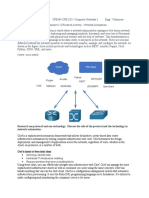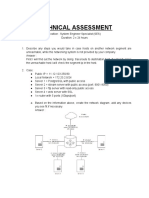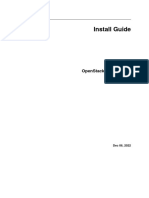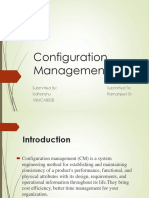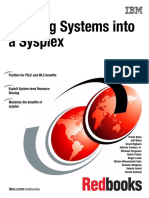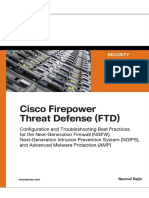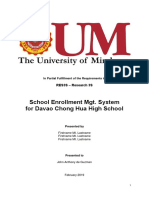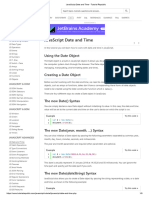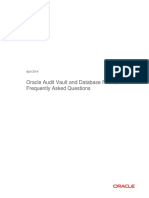0% found this document useful (0 votes)
100 views28 pagesNetwork Configuration Management at Cern: Arkadiy Shevrikuko Stefan Stancu
Network configuration management at CERN currently uses a tool called cfmgr, but they plan to evolve it. Cfmgr is Perl-based and supports multiple vendors. They want to leverage open-source tools and switch to Python. Their plan is to decouple configuration generation from enforcement and use NAPALM for network device interaction. They will transition cfmgr to be Python-based and integrate vendor APIs, starting with new vendors and later supporting existing ones. This will allow faster updates and easier integration of new networking gear.
Uploaded by
rishab singhCopyright
© © All Rights Reserved
We take content rights seriously. If you suspect this is your content, claim it here.
Available Formats
Download as PPTX, PDF, TXT or read online on Scribd
0% found this document useful (0 votes)
100 views28 pagesNetwork Configuration Management at Cern: Arkadiy Shevrikuko Stefan Stancu
Network configuration management at CERN currently uses a tool called cfmgr, but they plan to evolve it. Cfmgr is Perl-based and supports multiple vendors. They want to leverage open-source tools and switch to Python. Their plan is to decouple configuration generation from enforcement and use NAPALM for network device interaction. They will transition cfmgr to be Python-based and integrate vendor APIs, starting with new vendors and later supporting existing ones. This will allow faster updates and easier integration of new networking gear.
Uploaded by
rishab singhCopyright
© © All Rights Reserved
We take content rights seriously. If you suspect this is your content, claim it here.
Available Formats
Download as PPTX, PDF, TXT or read online on Scribd
/ 28










